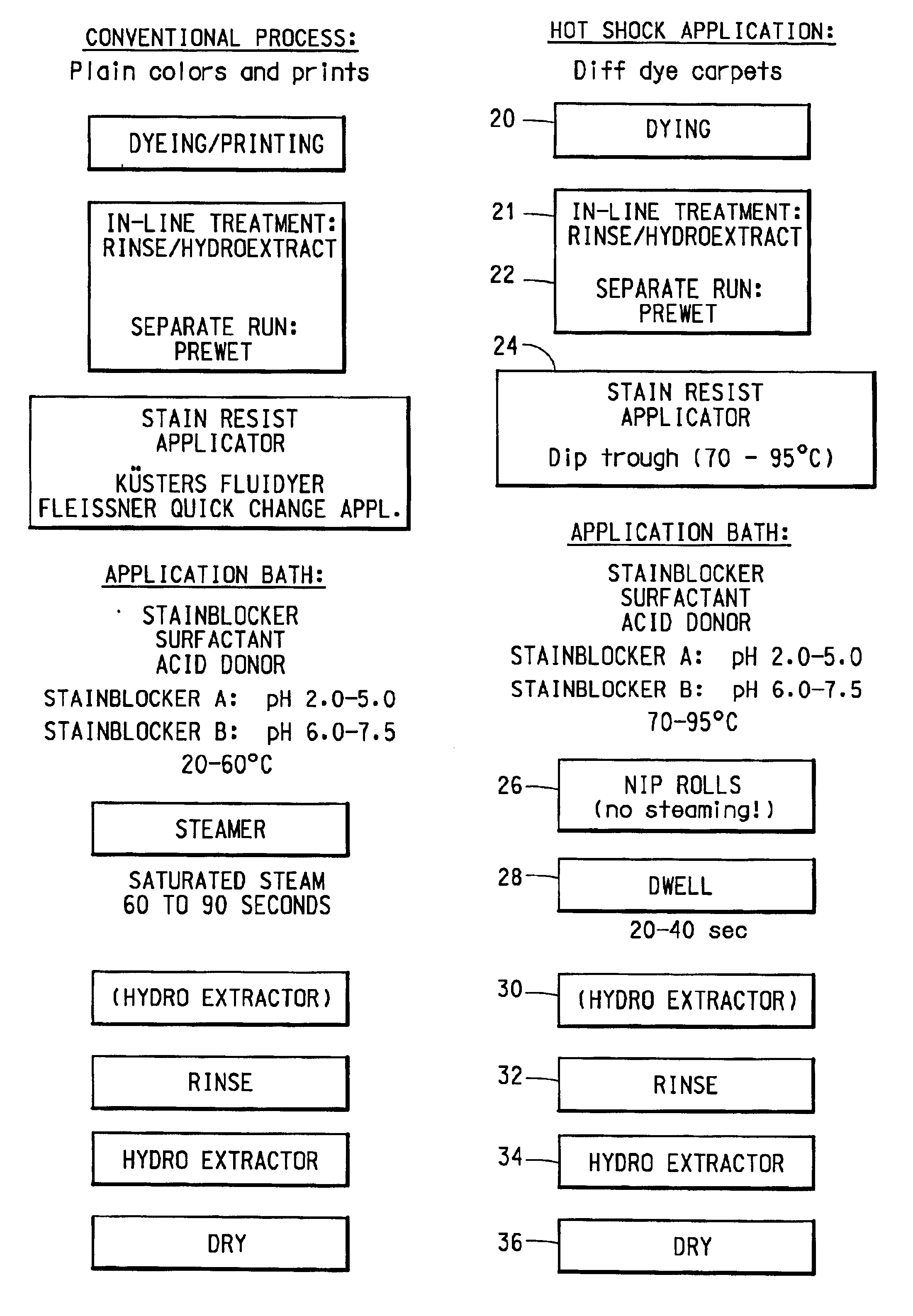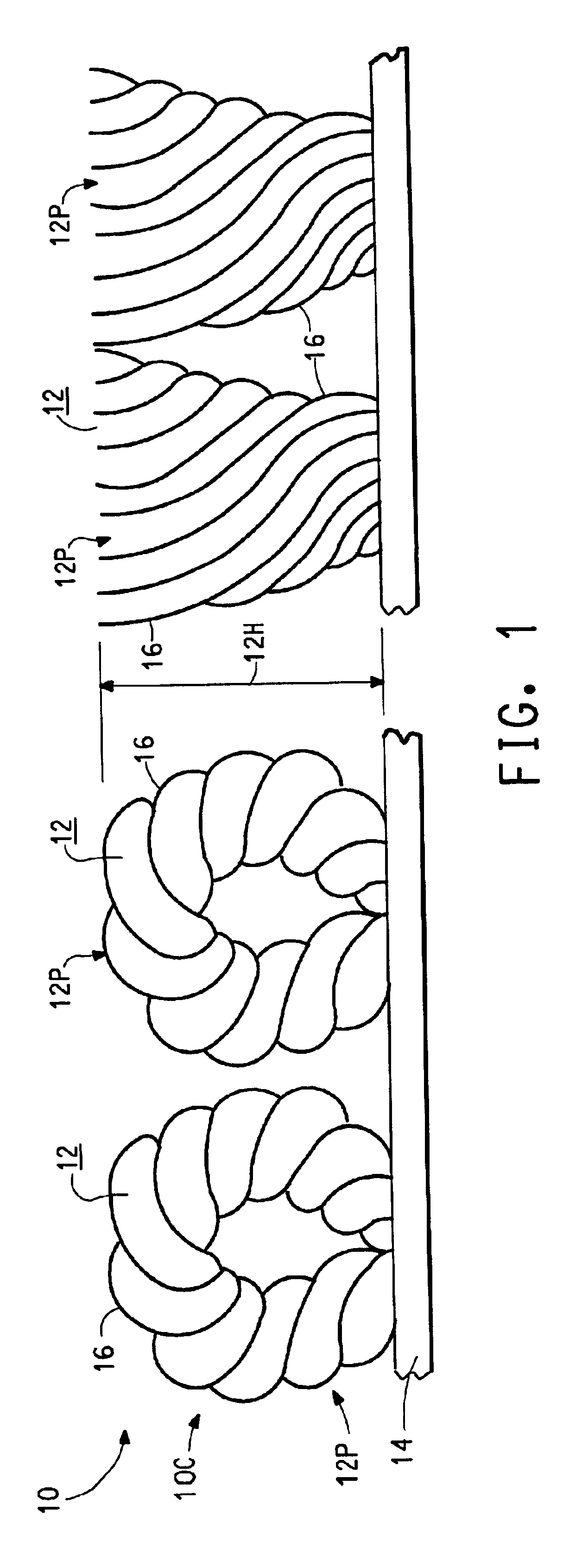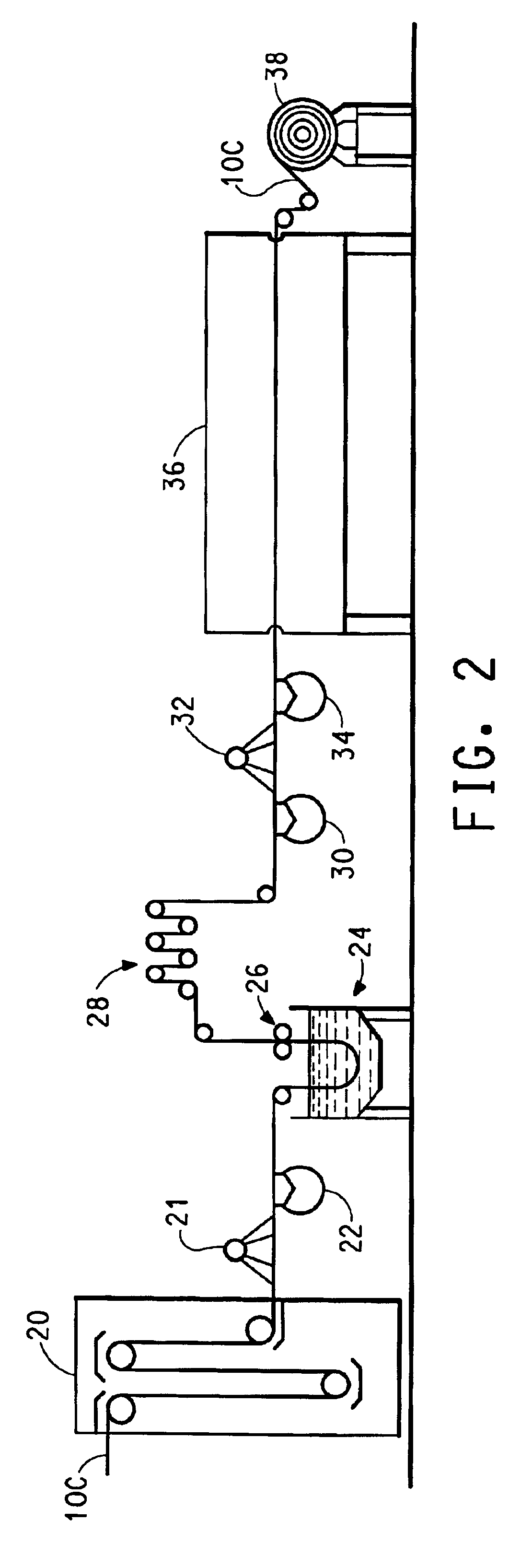Method of imparting stain resistance to a differentially dyeable textile surface and the article produced thereby
a textile surface and dyeing technology, applied in the direction of dyeing process, liquid/gas/vapor textile treatment, detergent compounding agent, etc., can solve the problem of insufficient penetration depth of stainblocker and inacceptable visual color chang
- Summary
- Abstract
- Description
- Claims
- Application Information
AI Technical Summary
Benefits of technology
Problems solved by technology
Method used
Image
Examples
examples 1-3
Test Methods. The following test methods were used in the Examples 1-3 below to measure carpet samples made according to the “hot shock” embodiment of the invention as well as control samples for stain resistance, color stability and dyelightfastness.
Kool-Aid® Soft Drink Stain Resistance Standard Test (Standardized AATCC Test Method 175-1991: Red 40 Stain Rating Scale). This impact tester method simulates a “household accident” with a spill dropped from table height onto a carpet.
Staining Agent: The staining agent is a ninety (90) gram per thousand (1000) cc water solution of cherry-flavored, sugar-sweetened Kool-Aid® soft drink. The solution is permitted to reach room temperature (22±2° C.) before use. An alternative staining agent is a solution containing 0.1 gram / liter FD&C Food Red 40 dyestuff, one (1) gram / liter citric acid, and ten (10) gram / liter sugar.
Equipment: A specially designed impact tester is used to apply the staining agent to the specimens under test. The impact tes...
PUM
| Property | Measurement | Unit |
|---|---|---|
| temperature | aaaaa | aaaaa |
| temperature | aaaaa | aaaaa |
| temperature | aaaaa | aaaaa |
Abstract
Description
Claims
Application Information
 Login to View More
Login to View More - R&D
- Intellectual Property
- Life Sciences
- Materials
- Tech Scout
- Unparalleled Data Quality
- Higher Quality Content
- 60% Fewer Hallucinations
Browse by: Latest US Patents, China's latest patents, Technical Efficacy Thesaurus, Application Domain, Technology Topic, Popular Technical Reports.
© 2025 PatSnap. All rights reserved.Legal|Privacy policy|Modern Slavery Act Transparency Statement|Sitemap|About US| Contact US: help@patsnap.com



